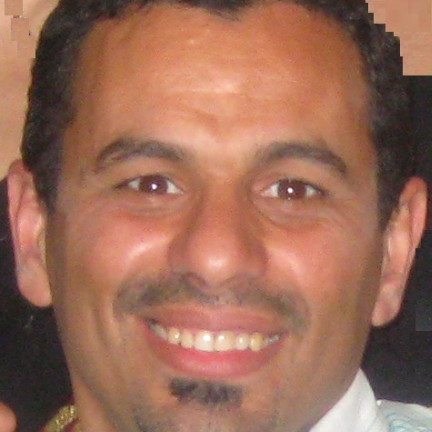
Sidi Mohammed BENSLIMANE
Work place: LabRI Laboratory Higher School of Computer, SIDI BEL ABBES, ALGERIA
E-mail: S.benslimane@esi-sba.dz
Website:
Research Interests: Computer systems and computational processes, Computer Architecture and Organization, Distributed Computing, Information Systems, Information Retrieval, Information Storage Systems
Biography
Sidi Mohamed Benslimane is a full Professor at the Higher School of Computer Science, Sidi Bel-Abbès, Algeria. He received his PhD degree in computer science from Sidi Bel Abbes University in 2007. He also received a M.S. and a technical engineer degree in computer science in 2001 and 1994 respectively from the Computer Science Department of Sidi Bel Abbes University, Algeria. He is currently Head of Higher School of Computer Science, Sidi Bel-Abbès, Algeria. From 2001 to 2015, he was a member of the Evolutionary Engineering and Distributed Information Systems Laboratory, EEDIS. Actually, he heads the Research Team ‘Service Oriented Computing’ at LabRI-SBA Laboratory. His research interests include, semantic web, service oriented computing, ontology engineering, information and knowledge management, distributed and heterogeneous information systems and context-aware computing.
Author Articles
Relevant XML Documents - Approach Based on Vectors and Weight Calculation of Terms
By Abdeslem DENNAI Mohammed Yacine DENNAI Sidi Mohammed BENSLIMANE
DOI: https://doi.org/10.5815/ijitcs.2016.11.03, Pub. Date: 8 Nov. 2016
Three classes of documents, based on their data, circulate in the web: Unstructured documents (.Doc, .html, .pdf ...), semi-structured documents (.xml, .Owl ...) and structured documents (Tables database for example). A semi-structured document is organized around predefined tags or defined by its author.
However, many studies use a document classification by taking into account their textual content and underestimate their structure. We attempt in this paper to propose a representation of these semi-structured web documents based on weighted vectors allowing exploiting their content for a possible treatment. The weight of terms is calculated using: The normal frequency for a document, TF-IDF (Term Frequency - Inverse Document Frequency) and logic (Boolean) frequency for a set of documents. To assess and demonstrate the relevance of our proposed approach, we will realize several experiments on different corpus.
A New Measure of the Calculation of Semantic Distance between Ontology Concepts
By Abdeslem DENNAI Sidi Mohammed BENSLIMANE
DOI: https://doi.org/10.5815/ijitcs.2015.07.06, Pub. Date: 8 Jun. 2015
Semantic similarity calculation models are found in many applications, with the aim to give additional knowledge to reason about their data. The choice of a similarity measure is quite crucial for a successful implementation of reasoning. In this work, we present an update of similarity calculation presented by Wu and Palmer which is considered the fastest in time generation of similarity. The results obtained show that the measure produced provides a significant improvement in the relevance of the values produced for the similarity of two concepts in ontology.
[...] Read more.Semantic Indexing of Web Documents Based on Domain Ontology
By Abdeslem DENNAI Sidi Mohammed BENSLIMANE
DOI: https://doi.org/10.5815/ijitcs.2015.02.01, Pub. Date: 8 Jan. 2015
The first phase of reverse engineering of web-oriented applications is the extraction of concepts hidden in HTML pages including tables, lists and forms, or marked in XML documents. In this paper, we present an approach to index semantically these two sources of information (HTML page and XML document) using on the one hand, domain ontology to validate the extracted concepts and on the other hand the similarity measurement between ontology concepts with the aim of enrichment the index. This approach will be conceived in three steps (modeling, attaching and Enrichment) and thereafter, it will be realized and implemented by examples. The obtained results lead to better re-engineering of web applications and subsequently a distinguished improvement in the web structuring.
[...] Read more.Other Articles
Subscribe to receive issue release notifications and newsletters from MECS Press journals